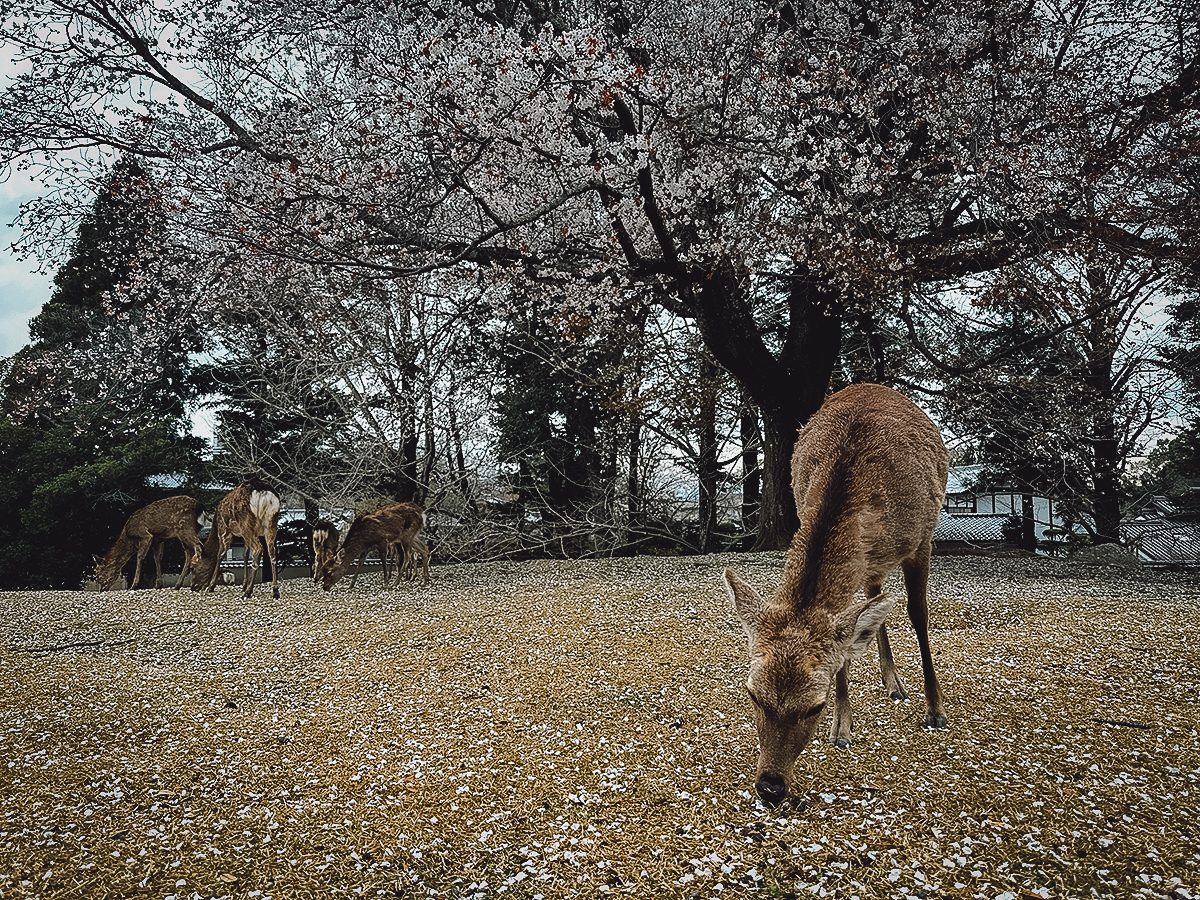SUMMARY HIGHLIGHTS
- Many people visit Nara on day trips, but there’s a lot more to Nara than just Nara Park.
- People who enjoy hiking may want to do the Yamanobe-no-michi trail, the oldest recorded road in Japan.
- Mt Yoshino is one of the most popular cherry blossom destinations in Japan.
“You don’t need to stay the night in Nara. You can just visit on a day trip from Osaka or Kyoto.”
I don’t know how or when it got started, but that’s been the narrative on Nara for as long as I’ve been traveling to Japan. Many people seem to think that one of the most popular destinations in the Kansai region isn’t worth more than a day trip!
I think part of the reason why Nara developed that reputation is because many of its top tourist attractions are located within a relatively small area. More than half of the Historic Monuments of Ancient Nara are located in and around Nara Park, along with the hundreds of free-roaming sika deer that people come to feed with senbei crackers.
I used to believe that narrative, capping my Nara visits to no more than a few hours, until a recent trip when I spent three days exploring more of the city and prefecture. And while Nara Park continues to be the main draw, I found there’s so much more to appreciate in Nara than just feeding deer.
In this Nara travel guide, I hope to dispel that notion and convince you that Nara is just as worthy of your time and attention as Kyoto or Osaka.
VISIT NARA QUICK LINKS
To help you plan your trip to Nara, we’ve compiled links to recommended hotels, tours, and other travel-related services here.
HOTELS
Top-rated hotels in Naramachi, one of the most convenient areas to stay for first-time visitors to Nara.
- Luxury: NIPPONIA HOTEL NARA NARAMACHI
- Midrange: MIROKU NARA by THE SHARE HOTELS
- Budget: Guesthouse Nara Komachi
EXPERIENCES
- Sightseeing Tour: Nara Half Day Trip Walking Tour
- Food Tour: Craft Beer, Sake, and Food Walking Tour
- Cultural Experience: Tea Whisk Making at a 500-Year-Old Workshop
- Cooking Class: Cooking Classes in Nara
OTHER SERVICES
GUIDE TABLE OF CONTENTS
NARA AT A GLANCE
When many foreigners think of Nara, the first thing that probably comes to mind is deer. But what some people may not realize is that Nara holds a special place in Japanese history – it was the country’s first permanent capital.
Formerly known as Heijokyo (or Heijo), Nara became the nation’s seat of government in 710. It maintained this role until 784 when the capital was moved to Nagaoka, and later to Kyoto, where it remained for over a thousand years[1].
As Japan’s first established capital, Nara is a city rich in religious and historical significance. It’s home to some of Japan’s most important cultural properties, including eight major landmarks that form the UNESCO World Heritage Site known as the Historic Monuments of Ancient Nara.
BEST TIME TO VISIT NARA
Like many destinations in Japan, spring and autumn are ideal times to visit Nara. The weather is mild and the landscape is at its most scenic, characterized by the pinks of cherry blossom season and the fiery oranges and reds of autumn.
If you’d like to experience the cherry blossoms, then plan your visit for late March to early April. If autumn foliage is what you’re after, then shoot for mid-to-late November[2]. March is a particularly interesting time to visit as it coincides with Omizutori, an annual festival held from March 1-14 at Todai-ji.
Various ceremonies are performed during Omizutori, but the most spectacular is Otaimatsu. It’s a torch-lighting ritual wherein fiery embers are rained down from Nigatsu-do Hall, showering the spectators below and offering them blessings for a safe year.
WHERE TO STAY IN NARA
Naramachi, the former merchant town of Nara, is an ideal place to stay. It puts you within walking distance of Nara Park and both Kintetsu-Nara and JR Nara stations.
You can check Booking.com or Agoda for hotel listings in Naramachi. Here are some of the top-rated hotels in the area:
- Luxury: NIPPONIA HOTEL NARA NARAMACHI
- Midrange: MIROKU NARA by THE SHARE HOTELS
- Budget: Guesthouse Nara Komachi
THINGS TO DO IN NARA
Explore the Historic Monuments of Ancient Nara
Any sightseeing trip to Nara begins with the Historic Monuments of Ancient Nara – a UNESCO World Heritage Site encompassing eight culturally significant landmarks. These include five Buddhist temples, a Shinto shrine, a palace site, and a primeval forest.
Conveniently, over half of these landmarks – Todai-ji, Kofuku-ji, Kasuga Taisha, Gango-ji, and Kasugayama Primeval Forest – are located in and around Nara Park. The other three – Yakushi-ji, Toshodai-ji, and Heijo Palace – are roughly 30-45 minutes by train or bus to the west.
Pictured below is Todai-ji’s Daibutsuden. Home to one of Japan’s biggest bronze statues, it held the record of being the world’s largest wooden building, despite the present reconstruction being only two-thirds of the temple hall’s original size[3].
A symbol of Nara, Todai-ji once served as the former head temple of all provincial Buddhist temples in Japan. It grew so powerful that the capital was moved away from Nara in 784 to lessen its influence on government affairs[3].
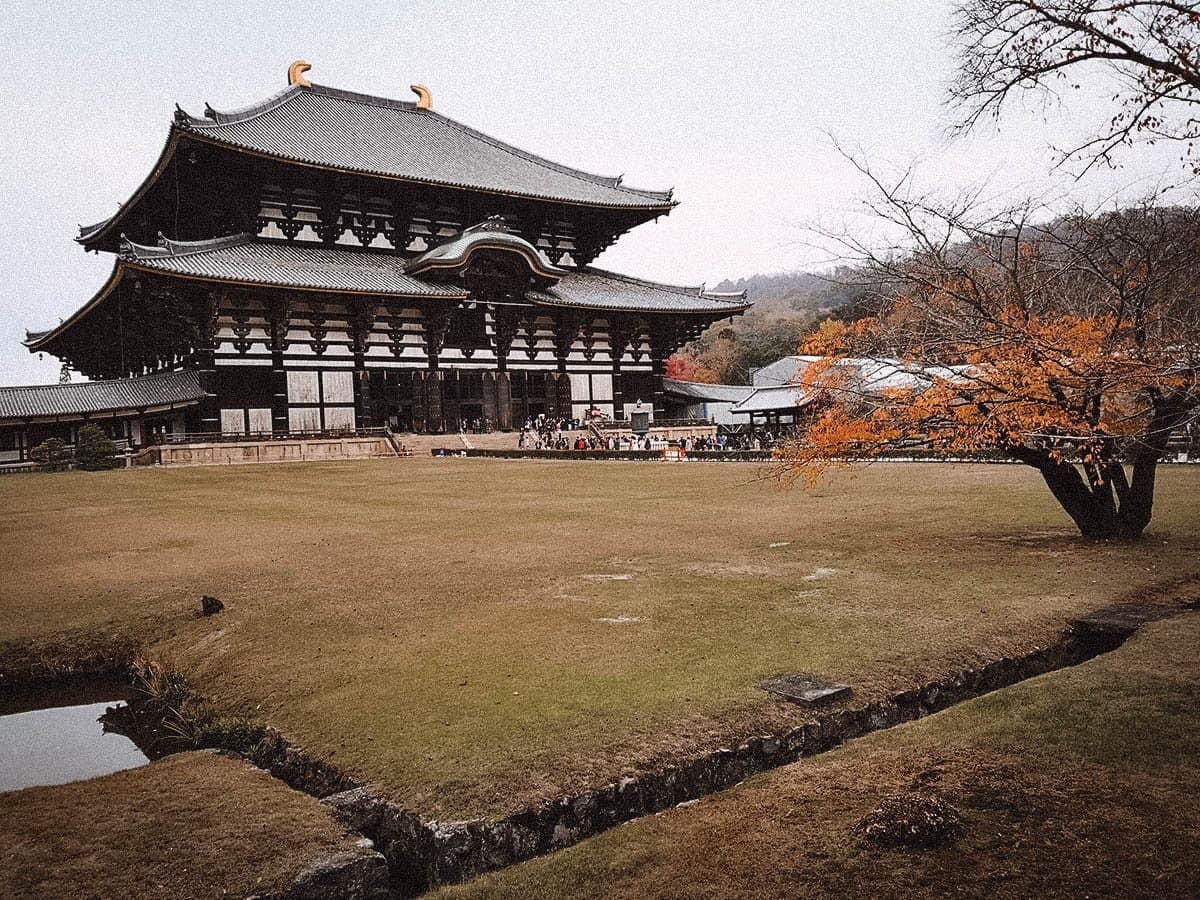
Feed the Deer
As impressive as Todai-ji’s Daibutsuden is, I’m guessing some tourists are more excited to visit Nara for the deer. Nara Park is home to hundreds of free-roaming sika deer that you can feed with shika senbei crackers. You’ll find vendors selling these crackers throughout the park.
In Japan, deer are viewed as messengers of the gods[4] so they’re treated with reverence and respect. I’ve tried without success but some deer are even said to return your bow for a deer cracker.
As much fun as it is to feed the deer, be careful when you do because some can get quite aggressive with food.
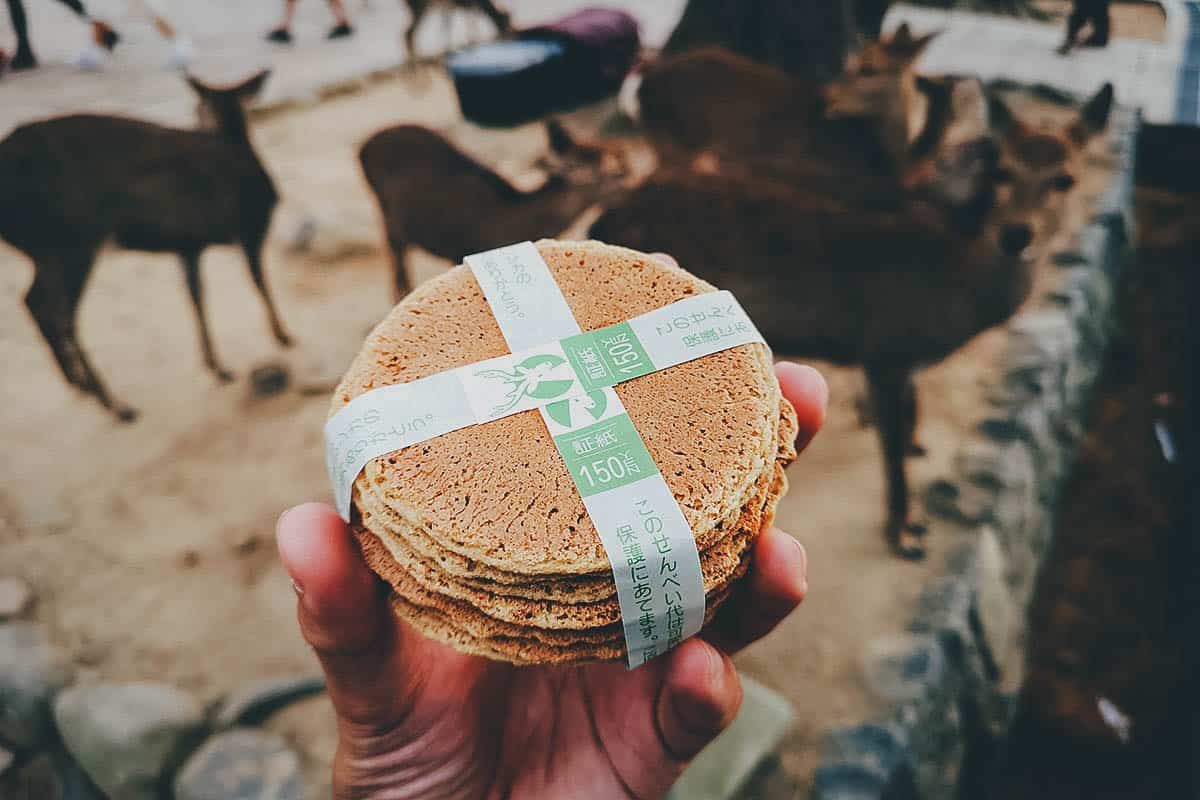
Enjoy Matcha in a Garden
Sipping matcha in a Japanese landscaped garden is one of my absolute favorite things to do in this country. It’s something I always look forward to no matter where I am in Japan.
In central Nara, you’ll find two gardens adjacent to each other near Todai-ji and Nara Park – Isuien (pictured below) and Yoshikien. They’re small but beautiful and well worth a visit. Isuien charges for admission but surprisingly, Yoshikien is free.
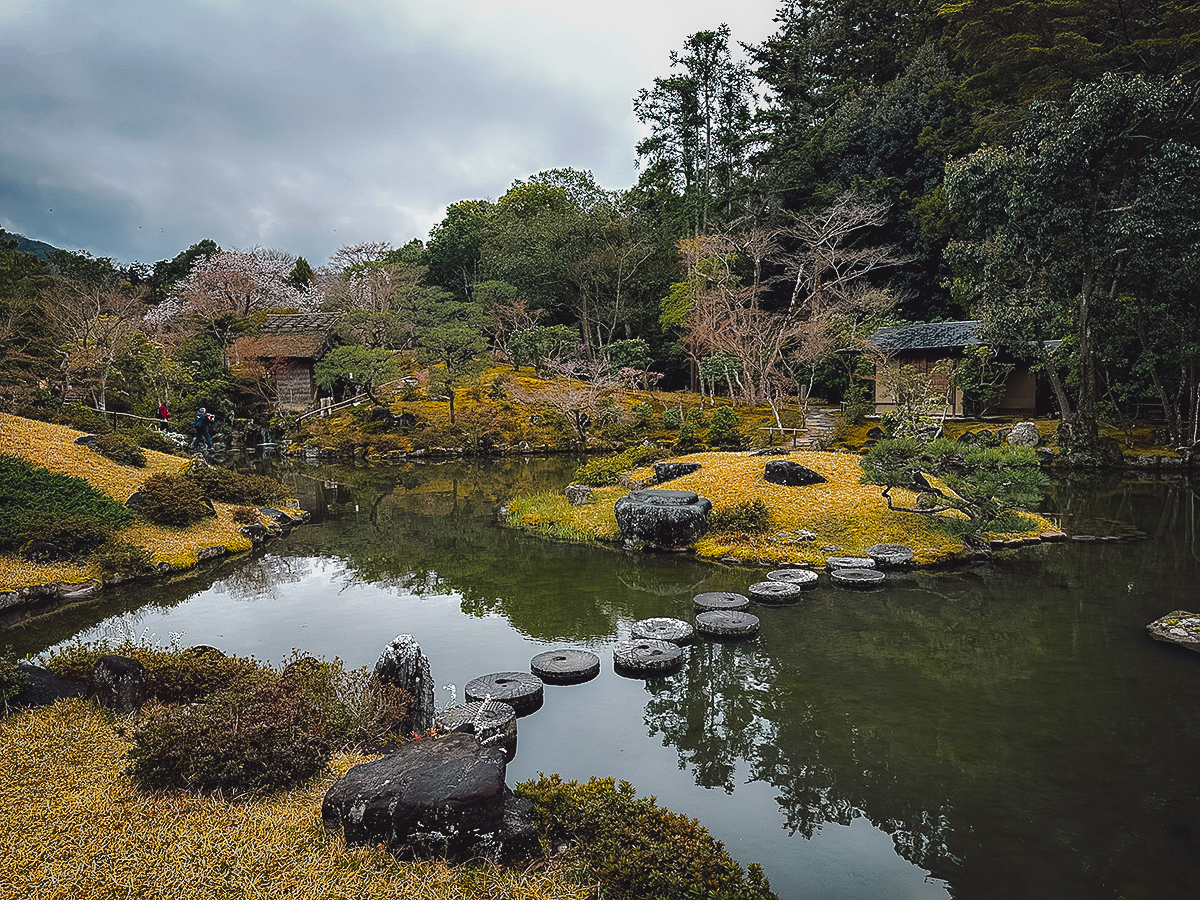
Visit Nara National Museum
Nara Park is also home to the Nara National Museum, an art museum that primarily displays Japanese Buddhist art. It consists of two buildings – the original building pictured below, and a newer wing connected to the original building via an underground passageway.
You can refer to the museum’s website for a schedule of exhibitions.
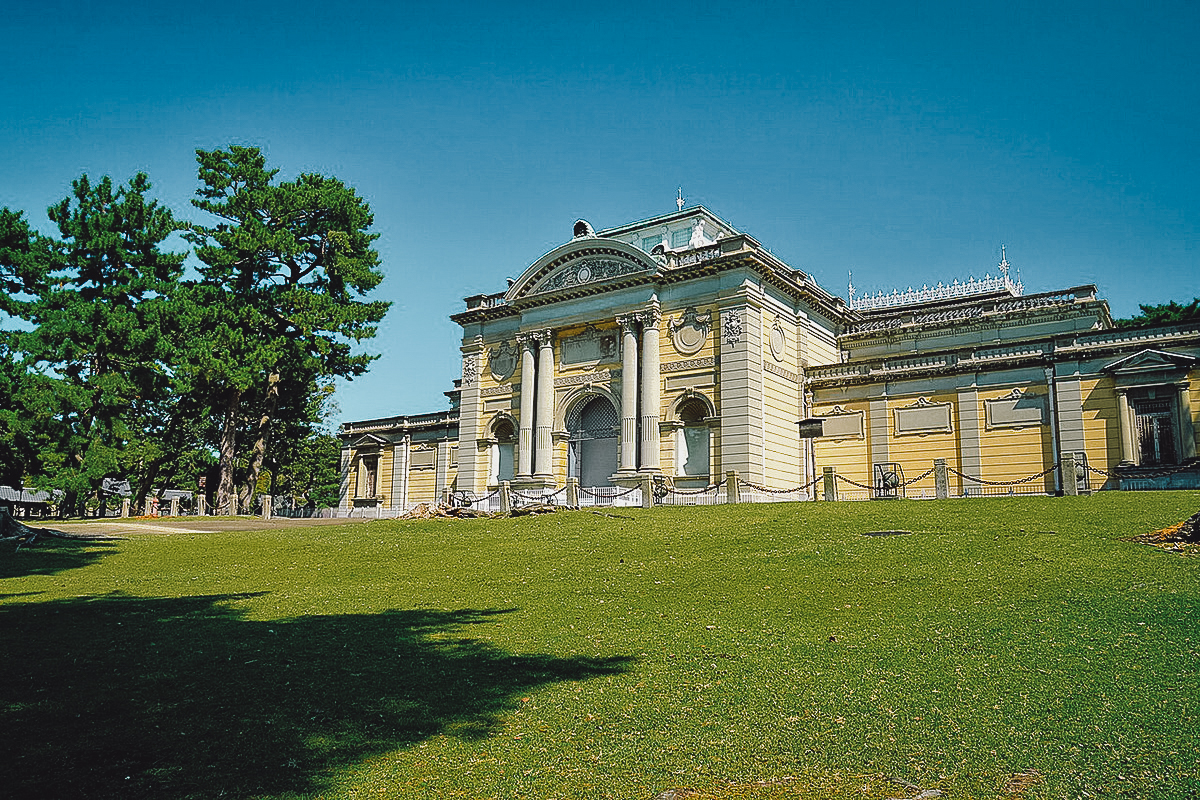
Photo by 663highland, CC BY-SA 3.0, via Wikimedia Commons / Processed in Photoshop and Lightroom
Go Beyond Nara Park
Many day trippers will visit only Todai-ji and the other temples in Nara Park, but if you have the time, then you may want to go beyond the park and explore more of the city.
The aforementioned Yakushi-ji (pictured below), Toshodai-ji, and Heijo Palace come foremost to mind, as does Horyu-ji, a temple complex housing some of the world’s oldest surviving wooden buildings.
Compared to Todai-ji and other centrally located temples, expect crowds to be much thinner outside the park.

Enjoy the Quieter Streets of Imaicho
There was a time when Nara provided a quieter getaway from the overcrowding of Kyoto and Osaka, but that no longer seems to be the case. These days, Nara Park is just as crowded and chaotic. Thankfully, there are still places like Imaicho.
Imaicho is a well-preserved former merchant town located less than an hour south of Nara Park. When I visited, I was literally the only tourist there.
Aside from the architecture, there doesn’t seem to be much in the neighborhood, but it does make for an interesting backdrop for atmospheric photos minus the crowds.
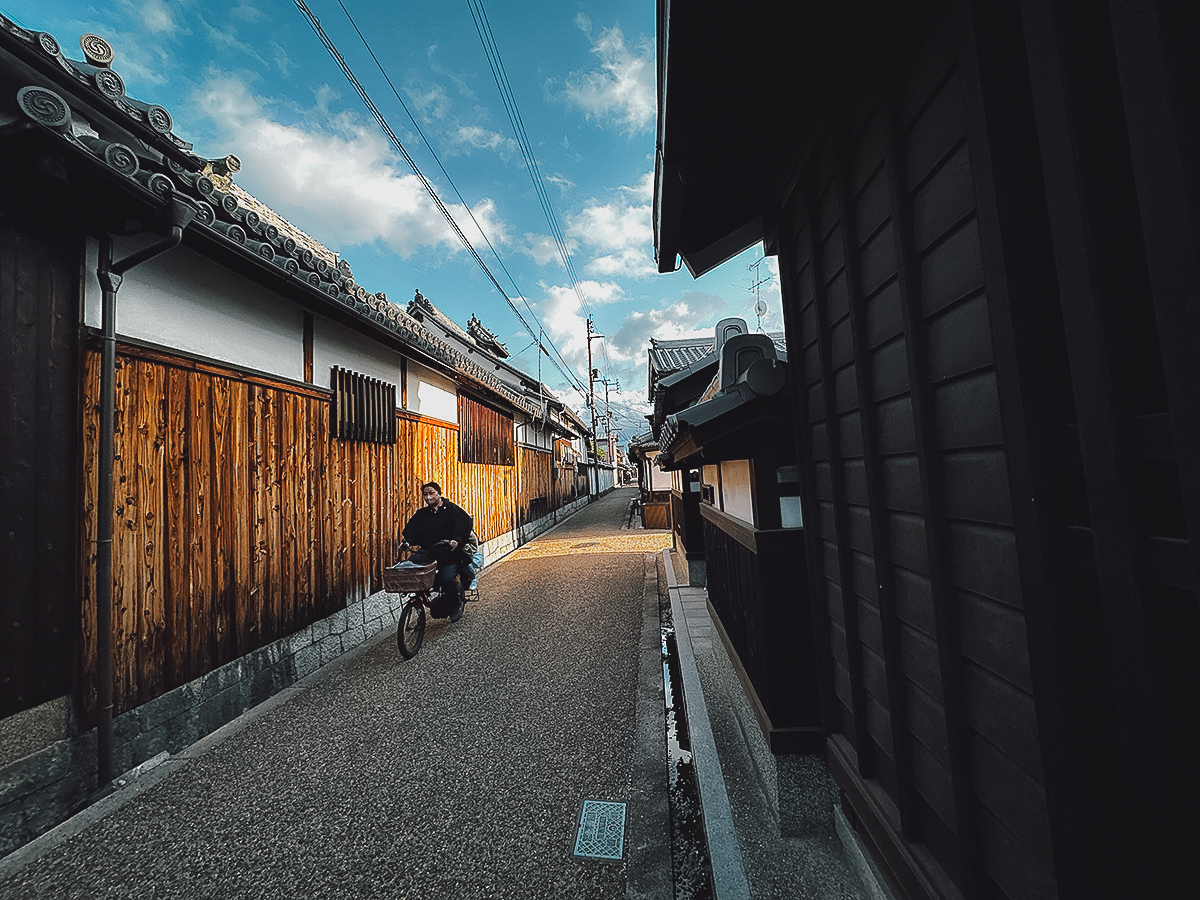
Take a Cooking Class
If you enjoy cooking and have a love for Japanese cuisine, then why not take a cooking class? I’ve taken several cooking classes around the world – including one in Tokyo – and it’s always deepened my appreciation for the local cuisine.
From making sushi to kneading the chewiest udon and ramen, you’ll have over a dozen cooking classes to choose from in Nara on airKitchen.

Photo by kazoka via Shutterstock
DAY TRIPS FROM NARA
Hasedera
While there are plenty of temples and shrines to explore in central Nara, Hasedera is worthy of a special side trip. Located less than 1.5 hours southeast of Nara Park, this temple is over 1,300 years old and serves as the head temple of the Buzan school of Shingon Buddhism[5].
Apart from its spiritual significance, what makes Hasedera special is its setting. Set in a valley, the temple complex features over thirty buildings built along the mountainside. I visited just before peak cherry blossom season and the view from the top was breathtaking. I imagine similarly stunning views in autumn.
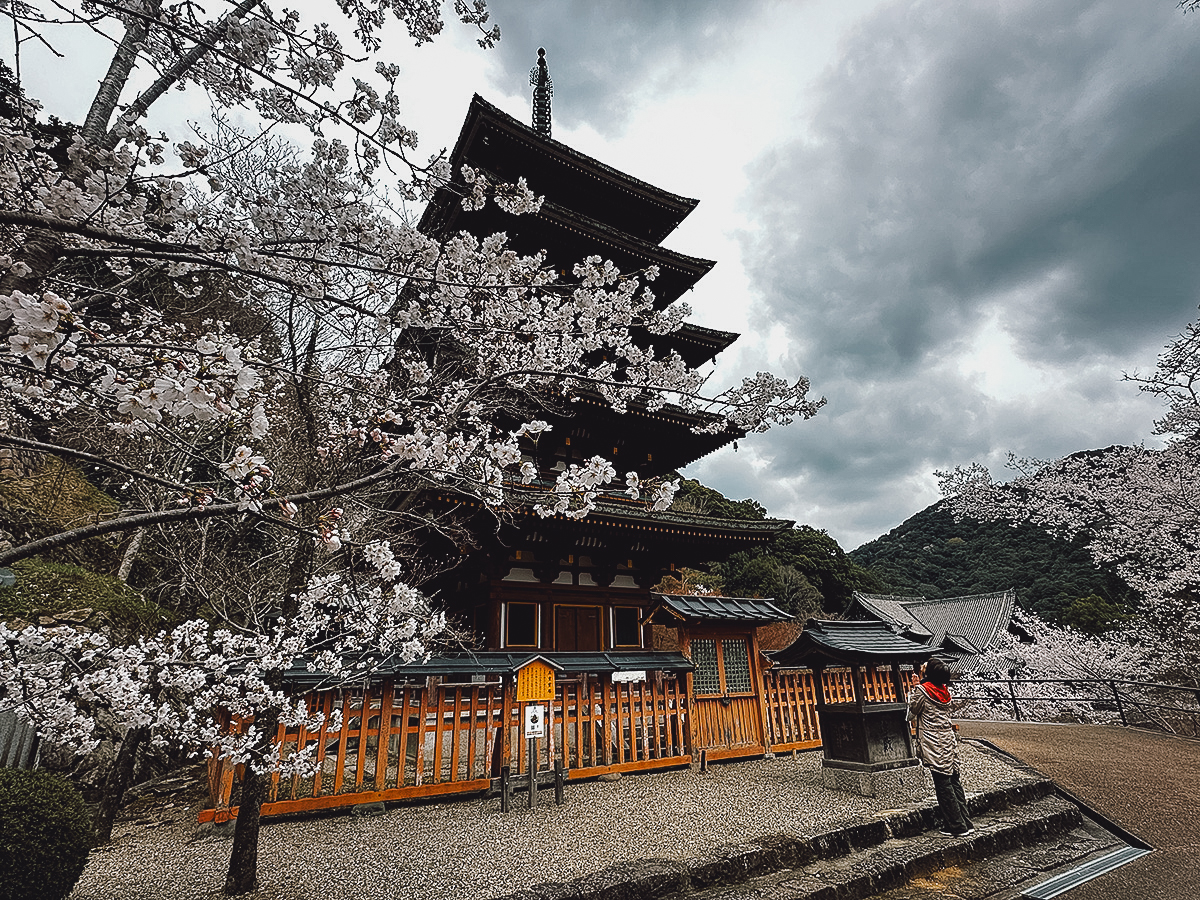
Yoshino
Speaking of sakura season, one of the most famous cherry blossom destinations in Japan is Mt Yoshino. Located around two hours south of Nara Park, it’s home to over 30,000 sakura trees blanketing the mountain’s slopes. Come at just the right time, and you’ll find the mountain covered in a sea of pink.
Unfortunately, I visited a week too early, but I did find a charming town dotted with many temples and shrines, not to mention restaurants, shops, food stalls, and cafes. Spring is the most popular but Yoshino is worth visiting at any time of the year, especially if you enjoy hiking.
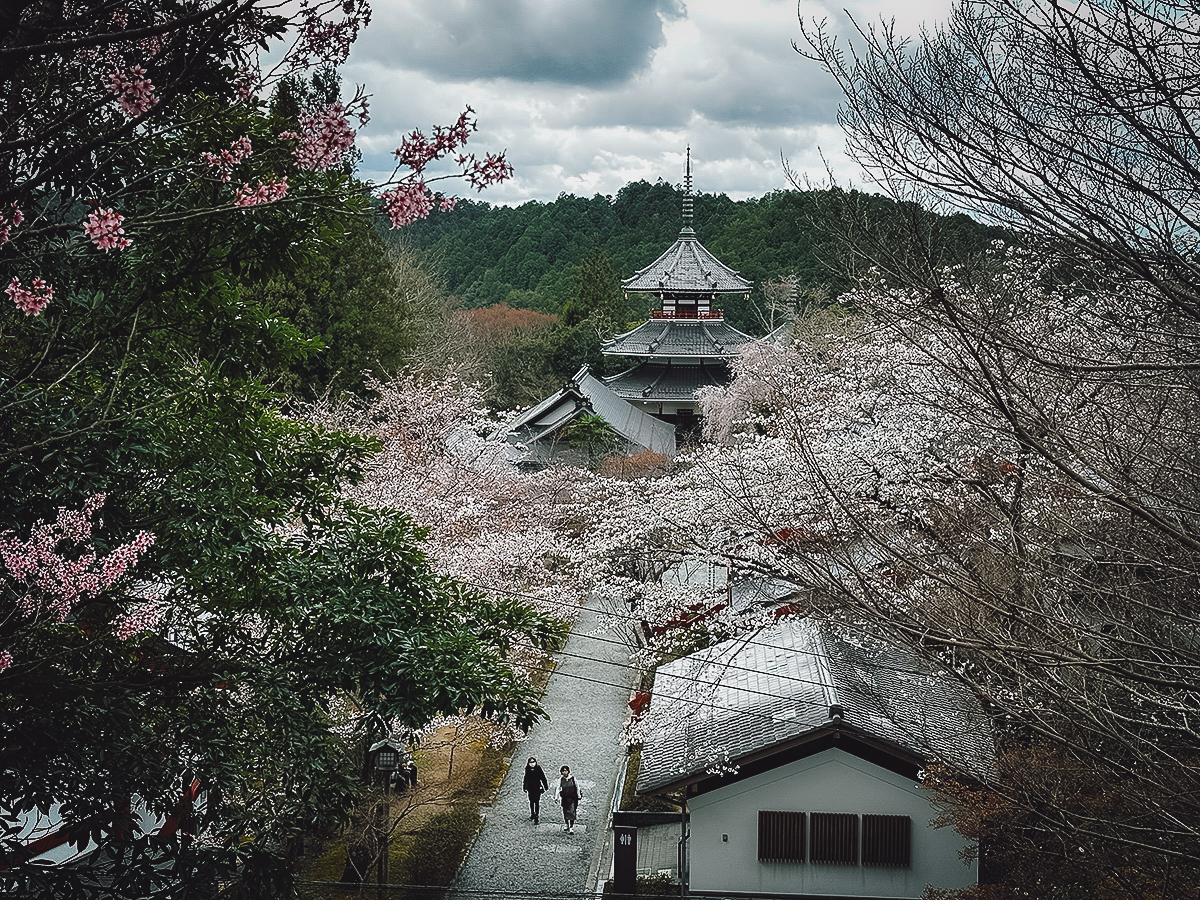
Yamanobe-no-michi
As I like to say, there are bad days, and there are “hiking in Japan” days. In the Nara countryside, you can do an easy and scenic hike along the Yamanobe-no-michi trail, the oldest recorded road in Japan. How cool is that?
The trail is well-marked so getting lost is actually quite hard to do. Making a few stops at temples and ancient burial mounds along the way, it took me around five hours to walk the most popular section of the trail, which extends roughly 16 km (9.9 miles) between Isonokami Shrine in Tenri and Omiwa Shrine in Sakurai.

VISIT NARA FAQs
Is one day enough to visit Nara?
If you’re interested only in exploring the areas in and around Nara Park, then yes, it is. But if you have time and want to see more of the prefecture, then staying for a couple of days isn’t a bad idea. It’ll give you time to visit places like Hasedera, Mt Yoshino, and the Yamanobe-no-michi trail.
Is it easy to get around in Nara?
Yes. Nara has a great public transportation system so you shouldn’t have any problems getting around. On my last trip, I had a Kintetsu Rail 5-Day Pass Plus which entitled me to unlimited use of the Kintetsu rail network and Nara Kotsu buses for the duration of my stay.
If you don’t have a rail pass, then getting an IC card is a good idea. It won’t afford you discounts on transportation but it will save you from the hassle of having to buy single-journey tickets every time.
I want to visit other cities in the Kansai region. What transportation pass can I use?
The aforementioned Kintetsu Rail Pass is a great pass for exploring Nara and Mie prefectures. It doesn’t include travel on JR trains, but the Kintetsu rail network is extensive in both Nara and Mie so I never felt like I needed anything else. Unfortunately, that isn’t the case in Osaka or Kyoto.
If you’re looking for a rail pass with extensive coverage in Osaka, Kyoto, and Nara, then the JR West Kansai Area Pass may be the better option. The Kansai Railway Pass (formerly known as the Kansai Thru Pass) is another possibility, but like the Kintetsu Rail Pass, it doesn’t include travel on JR trains.
THE FINAL SAY
While it’s true that the most popular attractions in Nara can be explored in a day, there’s certainly enough in the city and prefecture to merit a longer trip. If you have the time, then I suggest staying for two full days, maybe even three.
Hasedera is lovely at any time of the year while Mt Yoshino makes for a scenic side trip during peak cherry blossom season. If you enjoy a good walk like I do, then following the historic Yamanobe-no-michi trail for a few hours is a great way of spending a sunny day in Nara.
Disclosure
This Nara travel guide contains affiliate links. What that means is we’ll earn a small commission if you make a booking at no additional cost to you. We only recommend products and services that we use ourselves and firmly believe in. We really appreciate your support as it helps us make more of these free travel guides. Arigato gozaimasu!
References
1. Cartwright, Mark (2017, May 31). Ancient Nara. World History Encyclopedia.
2. Best Time To Go To Nara. Inside Kyoto. (2014, September 7).
3. Todaiji Temple. japan-guide.com.
4. Burdine, Krista R. (2015, February 22). Deer in Japan’s Nara Prefecture are Messengers of the Gods. World Religion News.
5. Hasedera Temple. japan-guide.com.

